International Conference on the Evolution of China Urban Water Environment & Ecology 2020 kicks off
2020-09-14 On September 12, the International Conference on the Evolution of China Urban Water Environment & Ecology 2020 hosted by the Water Environment and Ecology Council of Chinese Society for Urban Studies was held at Bagui Building, Guilin. Nearly 1,000 people from the academia and enterprises related to water environment and ecology attended the event to solve critical problems occurring in urban water environment and ecology after the breakout of the COVID-19 pandemic, discuss technological development and innovation, and explore a path towards the future of the water sector.
 Huang Junhua, Vice Chairman of the People’s Government of Guangxi Zhuang Autonomous Region, Cao Kunhua, Secretary of the Leading Party Members’ Group and Director of the Department of Science and Technology of Guangxi Zhuang Autonomous Region, Qu Jiuhui, academician of the Chinese Academy of Engineering (CAE) and President of the Water Environment and Ecology Council of Chinese Society for Urban Studies, delivered speeches at the opening ceremony. Experts including Yuan Daoxian, academician of the Chinese Academy of Sciences (CAS), and CAE academicians Peng Yongzhen, Xu Zuxin, Ren Hongqiang attended the conference for academic sharing. CWEG Chairman Dr. Hou Feng was invited to deliver a keynote speech.
Huang Junhua, Vice Chairman of the People’s Government of Guangxi Zhuang Autonomous Region, Cao Kunhua, Secretary of the Leading Party Members’ Group and Director of the Department of Science and Technology of Guangxi Zhuang Autonomous Region, Qu Jiuhui, academician of the Chinese Academy of Engineering (CAE) and President of the Water Environment and Ecology Council of Chinese Society for Urban Studies, delivered speeches at the opening ceremony. Experts including Yuan Daoxian, academician of the Chinese Academy of Sciences (CAS), and CAE academicians Peng Yongzhen, Xu Zuxin, Ren Hongqiang attended the conference for academic sharing. CWEG Chairman Dr. Hou Feng was invited to deliver a keynote speech.
Qu Jiuhui delivered an opening speech. He thanked all involved parties for their support to the conference, and outlined the history and social influence of the Water Environment and Ecology Council. He pointed out that, to fulfill the mission of the Council, further and wider collaboration is necessary.
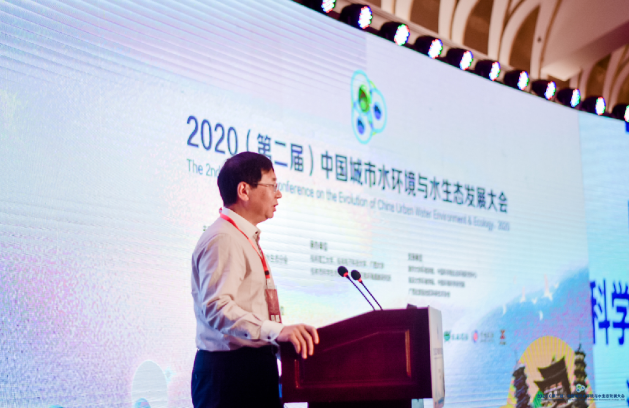
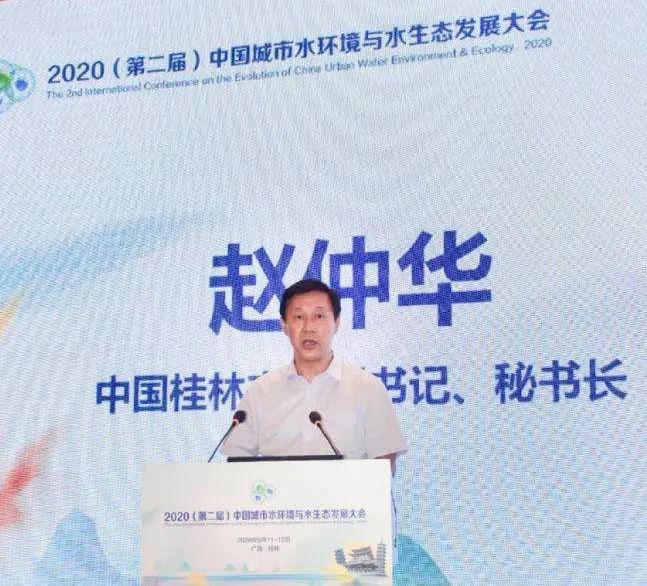
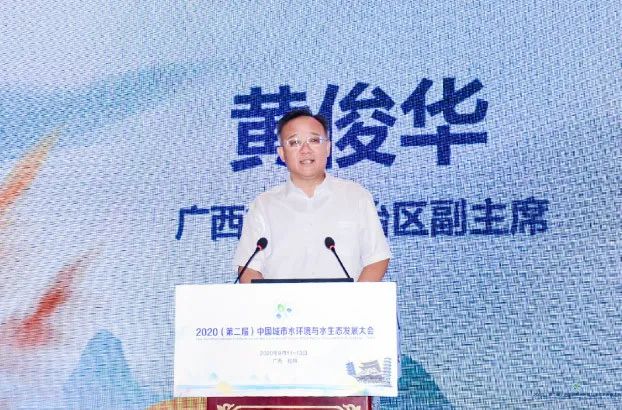
Several experts made keynote speeches at the conferences, including Xia Qing, researcher at the Chinese Research Academy of Environmental Sciences, Peng Yongzhen, CAE academician and chief professor of environmental science and engineering at Beijing University of Technology, Gertjan Medema, professor of Water & Health at Delft University of Technology in the Netherlands, Dr. Hou Feng, Chairman of CWEG, and Hu Jiadong, Secretary of the CPC Shenzhen Water Group Committee and Chairman of Shenzhen Water Group. Their speeches are titled “China’s Urban Water Environmental and Ecological Development Urgently Needs Joint Efforts”, “Principles and Technology of Shortcut Nitrification Coupled Anaerobic Ammonia Oxidation — An example of Promoting Advanced Denitrogenation of Wastewater by Step-feeding A2/O in Major Cities”, “COVID-19: The Implications and Impact of the Epidemic on the Water Industry” (Video Link), “Underground WWTPs Promote High-quality Urban Water Ecological Development”, and “Application and Practice of the WWTP-Pipeline Network-River Integrated Governance Model”, respectively.
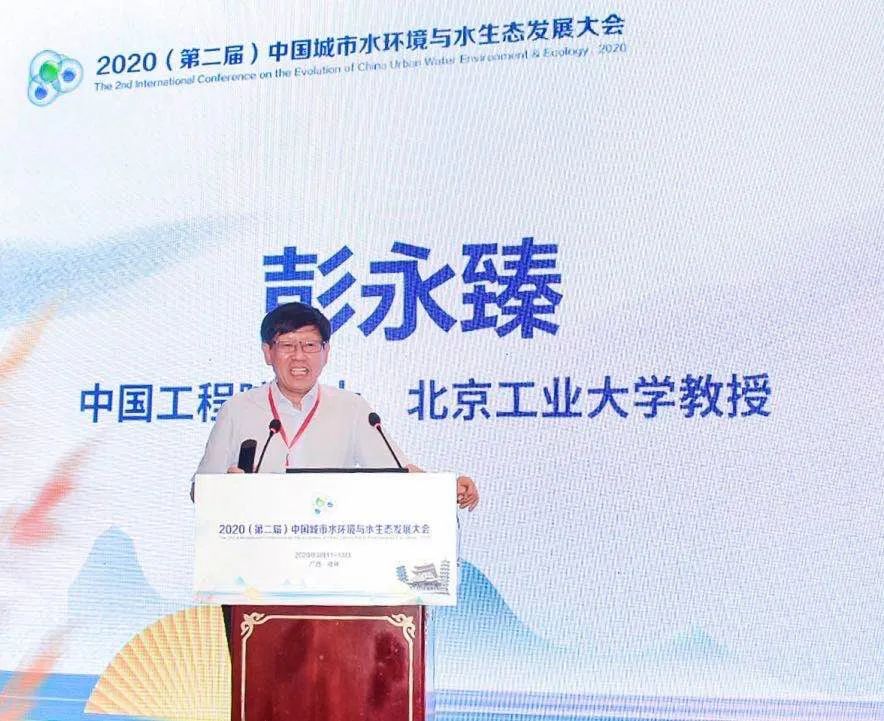
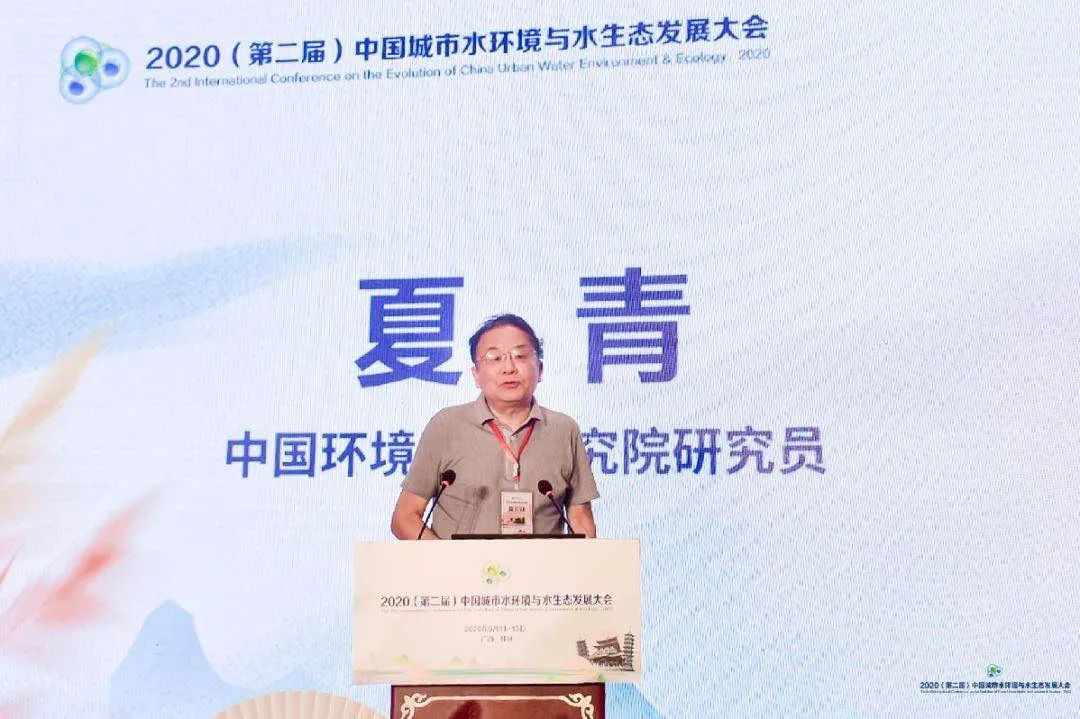
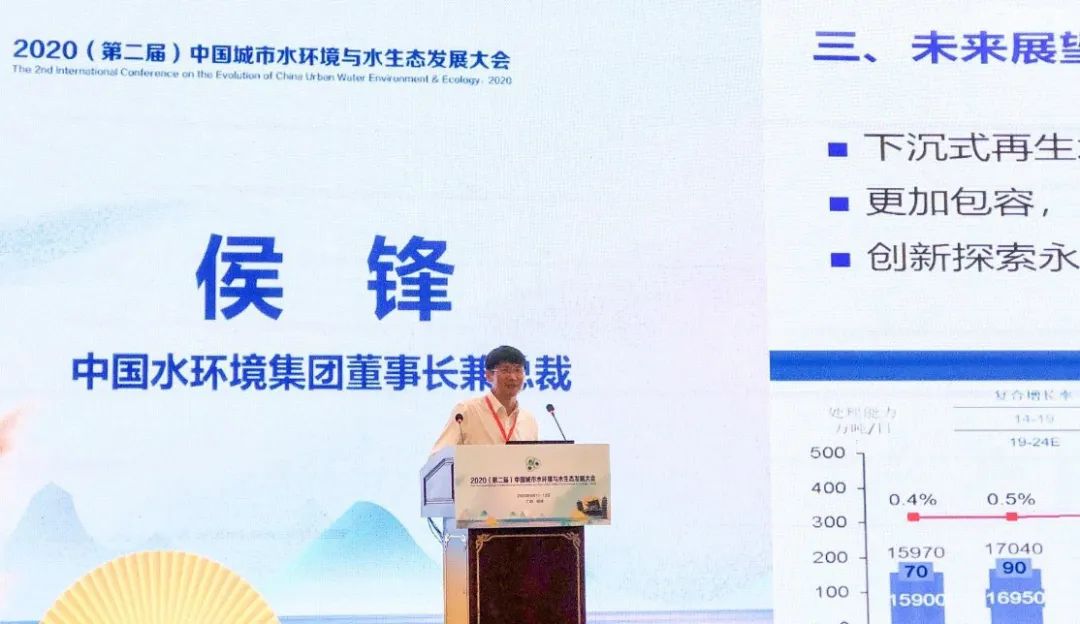
So far, underground WWTPs, which are eco-friendly, land intensive, energy efficient and ecologically safe, have been built and successfully put into operation in many cities such as Beijing, Shanghai, Erhai in Dali, and Chengdu in Sichuan.
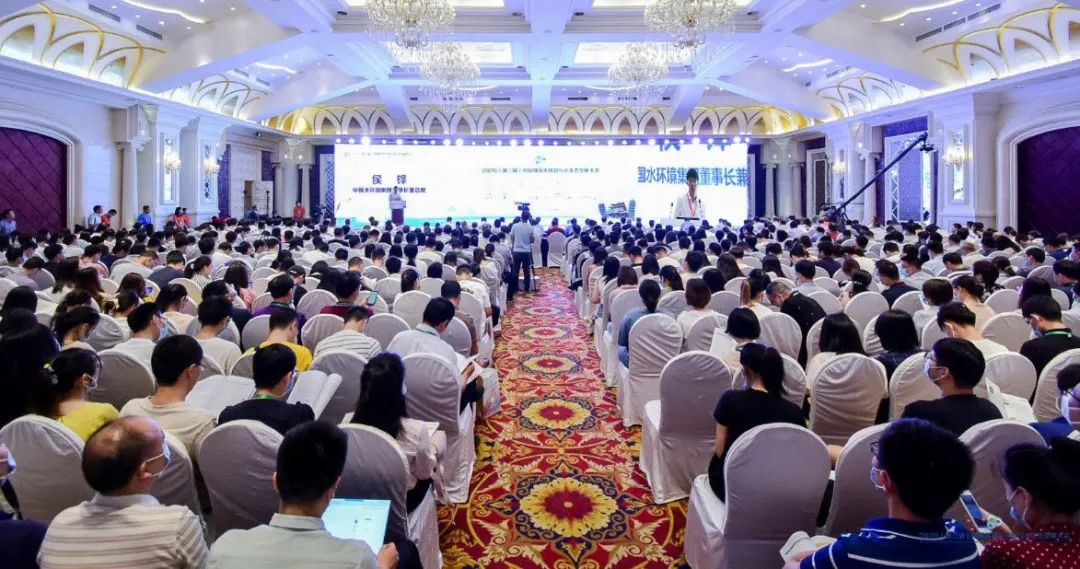 “Underground WWTPs have provided answers to whether WWTPs should be built and where they should be built. Besides, China’s first underground WWTP standard, whose formulation was led by CWEG, has taken effect on January 1, and more guidelines and standards are on their way. We will continue to address obstacles that hinder industrial development,” said Dr. Hou Feng.
“Underground WWTPs have provided answers to whether WWTPs should be built and where they should be built. Besides, China’s first underground WWTP standard, whose formulation was led by CWEG, has taken effect on January 1, and more guidelines and standards are on their way. We will continue to address obstacles that hinder industrial development,” said Dr. Hou Feng.
Dr. Hou Feng concluded his speech by warning that in the context that underground WWTPs are on the rise, it is necessary to prevent “bad money drives out good”, for low quality, low grades and low prices may destroy an industry by driving out the long-term supply of high-quality services. “Innovation is a perpetual process. We will create premium products and services for the creation of a greener China,” said Dr. Hou Feng.
The opening ceremony was followed by a frontier seminar themed on “Water Ecological and Environmental Protection in the COVID-19 Pandemic Era”. Two forums of “In-depth Dialogue in the Water Sector” and “Technological and Product Innovation Forum” were held simultaneously. A group standard whose formulation was led by the Council was released at the seminar. Experts shared the latest information regarding hot issues about water environment and ecology such as further improving urban WWTP standards, improving urban water environment through water reclamation, and comprehensive basin governance.

Qu Jiuhui delivered an opening speech. He thanked all involved parties for their support to the conference, and outlined the history and social influence of the Water Environment and Ecology Council. He pointed out that, to fulfill the mission of the Council, further and wider collaboration is necessary.

Qu Jiuhui, CAE academician and President of the Water Environment and Ecology Council of Chinese Society for Urban Studies, delivers an opening speech.
Zhao Zhonghua, Deputy Secretary and Secretary General of the CPC Guilin Municipal Committee, expressed congratulations to the conference on behalf of the CPC Guilin Municipal Committee, and Guilin Municipal People’s Government, and hoped that the Council can play a greater role in improving the water environment and ecology of Guilin.
Zhao Zhonghua, Deputy Secretary and Secretary General of the CPC Guilin Municipal Committee, delivers a speech.
Huang Junhua, Vice Chairman of the People’s Government of Guangxi Zhuang Autonomous Region, made the last speech. He started his speech from the Ning Canal which is historically as important as the Great Wall. Then he reviewed the history of Guilin in water resources utilization, water environment protection and urban development, and hoped that the Council can play a bigger role in guiding and participating in the water resources utilization and water environment protection of Guilin and Guangxi Zhuang Autonomous Region.
Huang Junhua, Vice Chairman of the People’s Government of Guangxi Zhuang Autonomous Region
At the conference, the Medal of Water Environment and Ecology 2020 was awarded to CAE academician Qian Yi. Qian said, “It’s great to see that water environment is gaining growing attention. However, China’s water environment still faces a number of critical problems such as resource scarcity, severe water pollution and intense flooding. There are three pressing tasks to be accomplished: first and most important, water conservation, second, source reduction, and third, water reclamation which turns wastewater into resource.”Several experts made keynote speeches at the conferences, including Xia Qing, researcher at the Chinese Research Academy of Environmental Sciences, Peng Yongzhen, CAE academician and chief professor of environmental science and engineering at Beijing University of Technology, Gertjan Medema, professor of Water & Health at Delft University of Technology in the Netherlands, Dr. Hou Feng, Chairman of CWEG, and Hu Jiadong, Secretary of the CPC Shenzhen Water Group Committee and Chairman of Shenzhen Water Group. Their speeches are titled “China’s Urban Water Environmental and Ecological Development Urgently Needs Joint Efforts”, “Principles and Technology of Shortcut Nitrification Coupled Anaerobic Ammonia Oxidation — An example of Promoting Advanced Denitrogenation of Wastewater by Step-feeding A2/O in Major Cities”, “COVID-19: The Implications and Impact of the Epidemic on the Water Industry” (Video Link), “Underground WWTPs Promote High-quality Urban Water Ecological Development”, and “Application and Practice of the WWTP-Pipeline Network-River Integrated Governance Model”, respectively.

Peng Yongzhen, CAE academician and chief professor of environmental science and engineering at Beijing University of Technology, makes a keynote speech.

Xia Qing, researcher at the Chinese Research Academy of Environmental Sciences, makes a keynote speech.
CWEG Chairman Dr. Hou Feng said in his speech, “In the past decades, China has built a large number of intensively distributed large-scale above-ground WWTPs based on the experience of western countries. But now, as a result of social and economic development, China is facing a shortage of water and land resources, and low environmental carrying capacity, which means conventional WWTPs can no longer meet the requirements of China’s high-quality water environmental development.
CWEG Chairman Dr. Hou Feng makes a keynote speech.
Dr. Hou Feng pointed out that WWTPs should gradually incorporate the functions of water reclamation, energy generation, and resource recovery and supply, transforming from “resource plants” into “energy plants”. “Taking the water environment governance of Guiyang Nanming River basin as an example,” he said, “compared with the original interception plan, CWEG’s underground WWTPs have reduced pipelining cost by ¥1.1 billion, and electricity cost caused by water diversion and replenishing by ¥30 million; saved more than 1,000 mu (67 ha.) of land; and can replenish the Nanming River with 200 million of reclaimed water every year.”So far, underground WWTPs, which are eco-friendly, land intensive, energy efficient and ecologically safe, have been built and successfully put into operation in many cities such as Beijing, Shanghai, Erhai in Dali, and Chengdu in Sichuan.

Dr. Hou Feng concluded his speech by warning that in the context that underground WWTPs are on the rise, it is necessary to prevent “bad money drives out good”, for low quality, low grades and low prices may destroy an industry by driving out the long-term supply of high-quality services. “Innovation is a perpetual process. We will create premium products and services for the creation of a greener China,” said Dr. Hou Feng.
The opening ceremony was followed by a frontier seminar themed on “Water Ecological and Environmental Protection in the COVID-19 Pandemic Era”. Two forums of “In-depth Dialogue in the Water Sector” and “Technological and Product Innovation Forum” were held simultaneously. A group standard whose formulation was led by the Council was released at the seminar. Experts shared the latest information regarding hot issues about water environment and ecology such as further improving urban WWTP standards, improving urban water environment through water reclamation, and comprehensive basin governance.
 中国水环境集团
中国水环境集团









